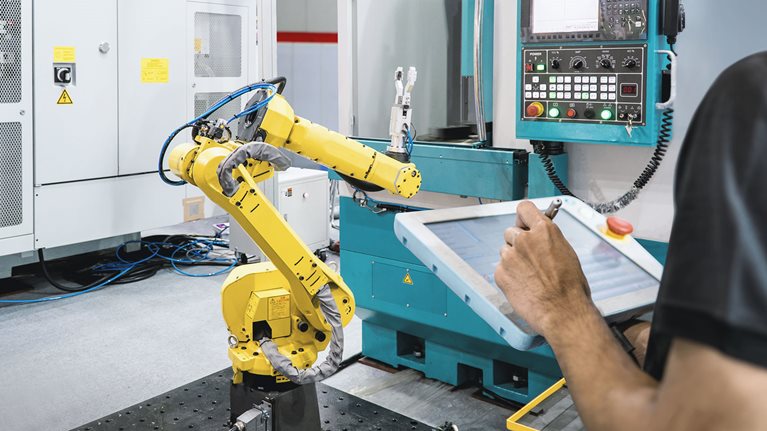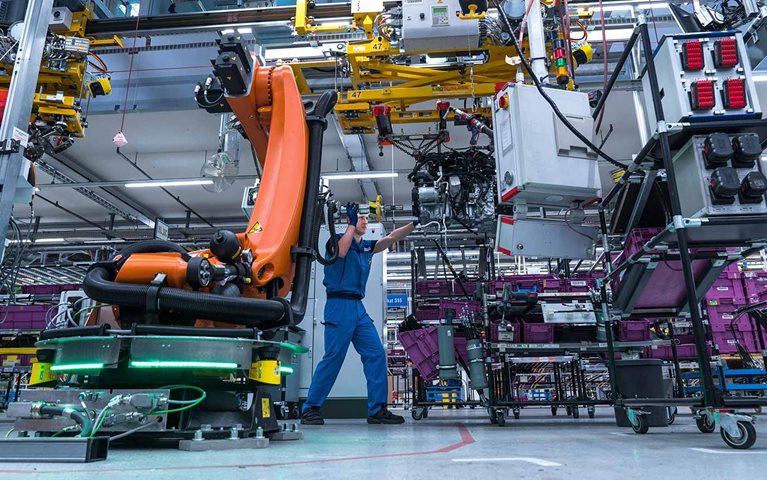The “lighthouses of manufacturing” initiative, a joint project by McKinsey and the World Economic Forum (WEF), was in its third year—and full swing—when COVID-19 hit.
The project identifies global manufacturing sites that have delivered significant operational and financial impact by adopting leading-edge technology at scale. These lighthouses then share their insights with other companies to advance innovation across the manufacturing industry.
The work has so far identified 44 lighthouses around the world, factories with self-driving vehicles, collaborative robots, virtual reality, lights-off operations, and more. With employees as the creative force leading the changes, the results can be eye-popping improvements in performance.
In mid February, as the pandemic began to shutter factories and businesses, the lighthouses were often in a better position to respond because they could be managed remotely, using digital technologies. With full transparency into the supply chain from end to end, teams were able to adjust quickly to changes, fine-tuning their processes, timing, and outputs. Several lighthouse factories were able to re-purpose their production lines to produce personal protective equipment (PPE) such as face masks, face shields and ventilators in as little as a few days.
Meanwhile, Yves Giraud, a McKinsey senior expert and project lead, Federico Torti and Franco Manna, project leads for WEF, needed to find a way to continue learning from sites in China, the Middle East, North America, and Western Europe—without traveling.
“We immediately started looking at how we might do the visits virtually,” remembers Yves. “We tested a variety of technologies for remote video and audio connectivity with a local factory to reproduce the experience of a physical site visit.”
Within two weeks, the team was able to move from physical to completely virtual visits. They felt good about what they had achieved, but they recognized that it would likely fall short of what they had come to expect from their live inspections. But they were pleasantly surprised.

“We found that the virtual visits could be more informative,” says Yves. All participants sign into a Zoom meeting and share the same view. An operator can stream a demo from the factory floor using Google Glass. With a video camera on a gimbal, viewers can see deep into the different positions and angles of machines and tools that they can’t physically see in person. And while watching the demo, meeting participants can refer to charts in parallel on the screen, gaining a deeper context. "A variety of experts can also be on hand to answer questions,” Yves adds.
During a recent virtual site inspection, an operator on a plant floor demonstrated a new digital solution for running a complex piece of machinery. The discussion then switched to a manager in her home dining room who oversees maintenance remotely during off hours, using a digital dashboard. The audience could ask questions of both the operator on the floor and the maintenance manager in her home.
In addition to offering greater flexibility in viewing technologies, virtual visits can save time and money for those doing the site inspections. Physical visits typically require six to eight hours of travel, with overnight hotel stays and a minimum of eight hours on site. Some environments, such as a semiconductor clean room that must be particle free or a foundry, may require added time for dressing up in protective gear. In comparison, virtual site inspections run about six hours, split over two days.
With virtual site inspections… you can get a clearer, deeper understanding of the solution in a shorter time.
Of course, there are trade-offs that come with remote tours. “With virtual site inspections, you may lose something in terms of relationship building, but you can get a clearer, deeper understanding of the solution in a shorter time. They make sense when a factory is in a very remote location, there are multiple sites in a value chain, or access to the shop floor is limited for some reason,” says Yves. “But we’ll never go back to 100 percent fully physical visits.”
